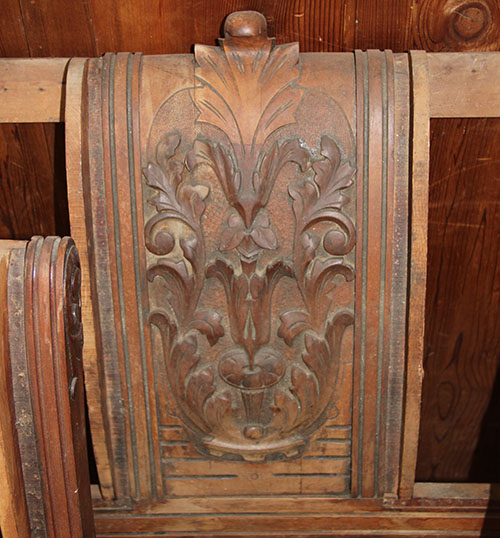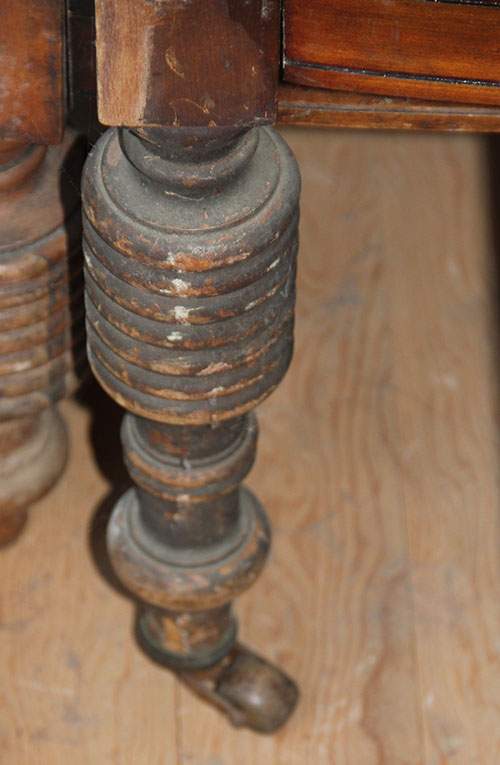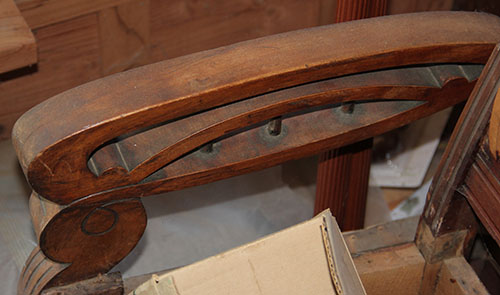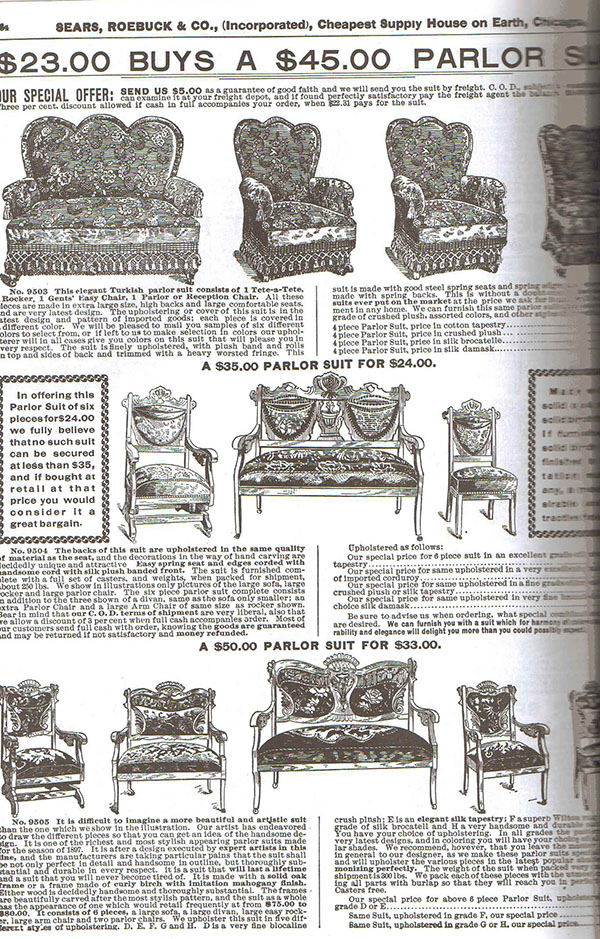Adventures in Upholstery: Figuring Out French Polish
April 24th, 2013
Thanks to a comment from the incomparable Nick Nicholson, of Nicholson Art Advisory, I’m now pretty sure that my furniture suite is French Polished birch. The good news is I know how to restore the wood finish. The bad news is that I have to French Polish it.
I mentioned this to one of my bridge partners, who owned an antiques and fine art dealership in Berlin, and she related tales of endless buffing, fixing spots on French Polished pieces. Imagine how my shoulder will feel after an entire suite of furniture…
Still undaunted, I ran a quick search of the internet and came up with Project Gutenberg’s French Polishing and Enamelling, by Richard Bitmead, published in London sometime in the late-19th century. Bitmead also wrote guides to upholstery and cabinet-making. I should probably see if I can’t find his work on upholstery…when the time comes for that step of course.
From Bitmead’s preface, describing the invention of French Polish finishing:
Early in the present [19th] century the method generally adopted for polishing furniture was by rubbing with beeswax and turpentine or with linseed-oil. That process, however, was never considered to be very satisfactory, which fact probably led to experiments being made for the discovery of an improvement. The first intimation of success in this direction appeared in the Mechanic’s Magazine of November 22, 1823, and ran as follows: “The Parisians have now introduced an entirely new mode of polishing, which is called plaque, and is to wood precisely what plating is to metal. The wood by some process is made to resemble marble, and has all the beauty of that article with much of its solidity. It is even asserted by persons who have made trial of the new mode that water may be spilled upon it without staining it.” Such was the announcement of an invention which was destined ultimately to become a new industry.
His book also contains sections on dyes, staining, and imitating more costly woods; other types of wood finishes; and even a chapter entitled “Cheap Work,” for those occasions “when economy of time is a consideration.” Hmm, sounds rather tempting.
Shellac, the principle ingredient in French Polish, turns out to be an excretion of the female Lac Bug. Once you get over the ick factor, it’s actually pretty cool. Here’s a blog post I found, detailing the Lac Bug and its many uses.
Bitmead’s treatise covers all the steps required to finish raw wood. Since my wood has already been finished, I will either need to sand it down (not sure how I feel about that, both in terms of effort and ethics) or modify the process a little to account for the previous finish layers. Something tells me I’ll be doing a lot of testing on the back legs…
Adventures in Upholstery: Introduction
April 15th, 2013
Most of my textile work to date has been focused on garments. Imagine my excitement (and trepidation) as I embark upon my first upholstery project!
The book I’m using for reference — a gift from a dear friend — suggests a small tufted footstool would be good for my initial endeavor. But I don’t believe in starting slowly.

Here’s the turn-of-the-century parlor suite I’m going to upholster. Without knowing much about wood, I’m going to guess it’s oak. There’s a sofa, a divan, an arm chair, and two side chairs. My mother found them, in this condition, years ago in an East Coast antique store. Her baby brother (whose childhood nickname was Flash) convinced her to buy the lot on the spot. My father was not so quick to appreciate it however, and it lingered in their basement for over a decade before Mom decided to ship them out to me in California. Actually, they’re just the thing for our early 1920s redwood cabin living room. (The house was originally just the single room — later 20th-century additions expanded it to a luxurious 3 bedrooms, 2 full baths.)

The carving is very art nouveau!

Legs on metal casters are typical of parlor furniture from the second half of the 19th century through the early 20th. They made the heavy pieces easy to move around on carpet so the rooms could be rearranged for various uses.

Don’t you just love the open arms? And they’re very strong. The whole thing is quite solid actually.
I sort of wonder who removed the original upholstery — was it the antique store? Perhaps it was in such tatters that they thought the pieces would sell better without it. Or maybe there was some awful intermediate treatment featuring cartoonish flowers from the 1970s…regardless, it’s completely gone. It’s a shame, since the suite would be much more interesting, not to mention valuable, if it were intact. But then I would have to worry about ruining it by using it. So maybe it’s better this way.
I wonder how common these suites actually are? Here’s a page from the 1897 Sears & Roebuck reprint, featuring a couple of similar sets (the two on the bottom):

Based on this, it looks like my suite is missing the rocker. Darn! I adore rocking chairs.

